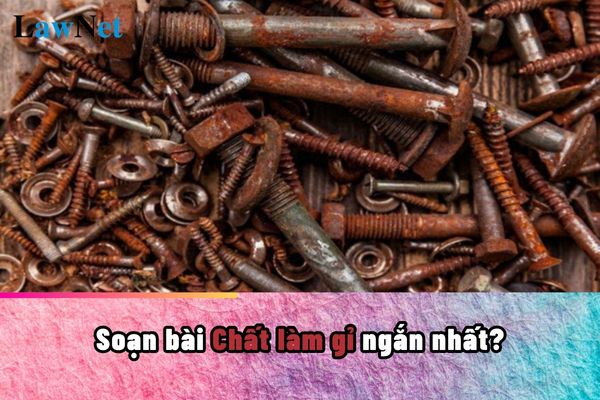What are guidelines on preparing the lesson "Chất làm gỉ" for students in Vietnam? Can grade 7 students in Vietnam be assessed based on comments?
What are guidelines on preparing the lesson "Chất làm gỉ" for students in Vietnam?
"Chất làm gỉ" is one of the lessons that grade 7 students will study.
Students can refer to the following sample lesson preparation guide for "Chất làm gỉ":
|
Guidelines on preparing the lesson "Chất làm gỉ" Unique and Haunting Idea: |
Note: Information is for reference only./.

What are guidelines on preparing the lesson "Chất làm gỉ" for students in Vietnam? Can grade 7 students in Vietnam be assessed based on comments? (Image from the Internet)
Can grade 7 students in Vietnam be assessed based on comments?
Based on the regulations in Article 5 Circular 22/2021/TT-BGDDT regarding evaluation methods:
Evaluation Methods
1. Evaluation by Comments
a) Teachers use verbal or written forms to comment on students’ performance in training and studies; noting progress, outstanding strengths, and major limitations of students during their training and learning process; evaluating training and study outcomes of students.
b) Students use verbal or written forms to self-comment on their performance in training and studies, noting progress, outstanding strengths, and major limitations of themselves.
c) Parents, agencies, organizations, and individuals participating in the educational process provide feedback on the students' performance in training and studies.
d) Evaluation by comments on the results of students’ training and study is applied in regular evaluation, periodic evaluation through forms of testing and assessment suitable to the characteristics of the subject.
2. Evaluation by Scores
a) Teachers use scores to evaluate the results of students' training and study.
b) Evaluation by scores is applied in regular evaluation, periodic evaluation through forms of testing and assessment suitable to the characteristics of the subject.
3. Evaluation Forms for Subjects
a) Evaluation by comments for subjects: Physical Education, Arts, Music, Fine Arts, Local Education Content, Experiential, Career-oriented Activities; the results of studying in these subjects are evaluated by comments with two levels: Passed, Not Passed.
b) Evaluation by comments combined with scoring for subjects in the General Education Program, except for the subjects specified in subsection a of this section; the results of learning in these subjects are evaluated by scores on a 10-point scale. If a different scale is used, it must be converted to a 10-point scale. The evaluation score is an integer or decimal rounded to the first decimal place.
The study and training results of lower secondary students are evaluated by the following methods:
- Evaluation by comments
- Evaluation by scores
Thus, according to the regulation, grade 7 students can indeed have their study results evaluated by comments.
What are the requirements for the general education program in Vietnam?
Based on Article 31, Clause 1 of the Education Law 2019 regarding the general education program, the program must meet the following five requirements:
[1] Reflect the goals of general education;
[2] Define the requirements for the qualities and competencies students must achieve after each level, the compulsory education content for all students nationwide;
[3] Specify the methods, forms of organizing educational activities, and evaluation of educational results for subjects in each class and level of general education;
[4] Be unified nationwide and flexibly implemented, suitable to the specific conditions of localities and general educational institutions;
[5] Be extensively solicited for opinions from organizations and individuals and undergo experimental testing before promulgation; it must be publicly announced after promulgation.

